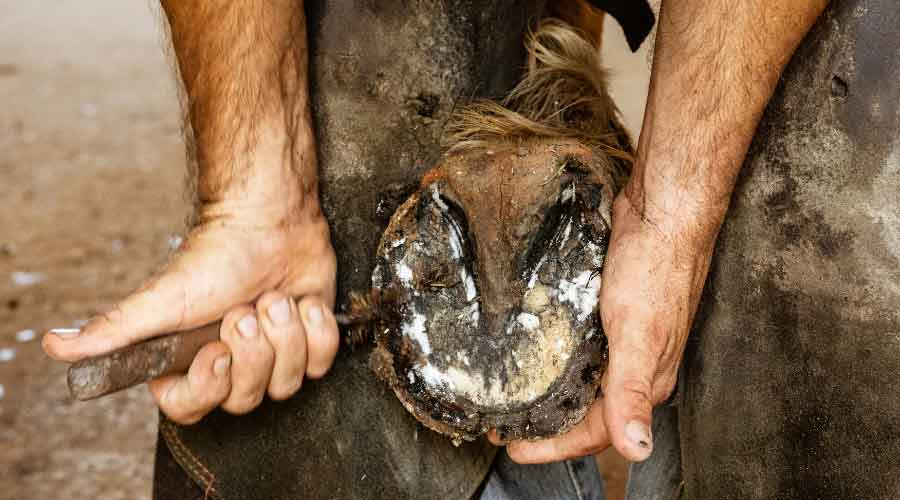If you are a horse enthusiast, you’ve probably heard about Icelandic horses and Fjord horses. These are the two most cherished horse breeds with unique features and uses. But which one is the best? This brings us to the Icelandic horse vs Fjord horse comparison.
Both types of horse breeds are best for riders of all levels. However, the horses differ in various aspects. For instance, the Icelandic horse originated from Iceland while the Fjord horse originated from Norway.
Icelandic horses are used for riding, breeding, and companionship while Fjord horses are used for trekking, farming, driving, and pleasure riding. Another notable difference is that Icelandic horses are friendly, gentle, calm, and intelligent. On the other hand, Fjord horses are kind, gentle, and hardy.
When it comes to the gait, an Icelandic horse breed is good for an Icelandic tolt, steady, and sure-footed gait while the Norwegian fjord is good for a true, sure-footed, and well-balanced gait.
We will look into details about these two types of horses and learn their history, appearance, uses, temperament, feeding, price, and rarity.
Let’s find out more!
Icelandic horse vs fjord horse comparison
To determine which horse breed is better, it is good to understand the breed characteristics of an Icelandic horse and a Norwegian fjord horse.
Let’s jump into this comparison!

History: how did these breeds of horses come to be?
The Icelandic horse breed is cherished by many Icelanders not only because of its unique gait but also its resilience to the harsh Icelandic climate. They are regarded as small horses with big personalities. The Icelandic breed horse has several colors like bay, blue dun, white, black, chestnut, and many more.
Viking settlers brought the first Icelandic horse in the 19th century, and they were used as the main mode of transportation. These horses are believed to have originated genetically from Norwegian and German horses. Iceland horses are regarded as the purest breed, and that is why horse breed importation is forbidden in Iceland.
On the other hand, the Norwegian fjord horse is a small and strong horse breed commonly found in Western Norway. The Norwegian fjord is available in different colors like yellow dun, brown dun, red dun, brown dun, white dun, and gray dun.
The fjord horse originated in Norway and it is traced back to the Vikings. According to the Norwegian fjord horse registry, this is one of the oldest horse breeds which has no history of cross-breeding with different horse breeds. To date, fjord horses remain the purest breeds. They migrated to Norway 4000 years ago, after which they became domesticated. Fjord horse selective breeding began over 2,000 years ago.
Related: Discover the differences between camels and horses! From their physical abilities to their behavior, find out which animal is better suited for riding, working, and endurance.
Appearance: what do Icelandic horses and fjord horses look like?
Icelandic horses have a distinct appearance with short legs, small size, and full mane and tail. The average height of an Icelandic horse is 50-54 inches and the weight ranges from 730-840 lbs. The horses are robust, have beautiful bodies, and they handle the harsh Icelandic climate pretty well.
But is an Icelandic horse the same as a pony? At a first glance, you can easily mistake an Iceland horse for a pony because of its height. Even though they have pony-size height, they are not regarded as Icelandic ponies. Icelandic horses have primitive markings, and they are believed to have descended from the Mongolian horse.
Icelandic horses have a wide range of color variations, and they exhibit more than 40 colors and 100 variations. Their major colors are bay, brown, and chestnut with variations like roan, gray, silver dapple, palomino, and dun.
Conversely, it is pretty easy to recognize the Norwegian horse because it is small and muscular. An adult Norwegian horse has a height of 53 cm, 59 inches, and an average weight of 880-1,100 lbs.
Unlike Icelandic horses, Norwegian horses do not have color diversity. The standard breed color is dun (golden to beige color with 5 shades). Fjord horses have red dun, yellow dun, white dun, gray dun, or brown dun. This explains why they were popular as farm draught horses and war mount horses.

Temperament: how do Icelandic horses and fjord horses behave?
Icelandic horses are self-confident, submissive, gentle, and best for all riders regardless of age. This makes them good companions for kids and adults alike. Because of their easygoing attitude, these horses are the most popular in the world. They are friendly and curious but they can as well be relentless and stubborn.
Fjord Horses are gentle, calm, well-behaved, and agreeable provided you treat them with care. They are great horses for beginners and children. Their calm nature makes them best for novice riders because they hardly spook.
Uses: what are Icelandic horses and fjord horses used for?
The Icelandic horse is commonly used as a general riding horse. It is a trustworthy family horse that provides great companionship. This is the only type of horse that can do five gaits, making it comfortable to ride.
Fjord horses are commonly used for pleasure riding because they are sturdy enough to handle tough terrains. Today, they have been bled for driving and riding.
Related: Are you wondering if it’s possible to ride a 2-year-old horse? Get the facts you need to know about young horses and riding them.
Price and rarity
Icelandic horses are less compared to other horse breeds, and this makes their initial price expensive. A horse lover who wants to purchase an Icelandic horse can pay approximately $10,000 – $15,000. Other additional costs for feeding, horse care, and hay can add up to $400-$800 monthly depending on your country.
Fjord horses are also limited, and their initial cost is higher than other horse breeds. You can spend approximately $4000 – $14,000 if you want to buy a Fjord stallion. Other additional fees for horse care, hay, boarding, and feed can total $400-$800 monthly.
Feeding
When it comes to the diet and nutrition of Fjord horses Icelandic horses, hay and grass are their ideal nutrition. You will hardly need extra grain, and if you do, very little amount. However, you might need to add some vitamin and mineral supplements to their diet, but of course, consult with your vet.
Avoid overfeeding Fjord and Icelandic horses with hay rich in calories, grain and starch because they will develop obesity problems.

Related: Learn all you need to know about owning and caring for a 3-year-old horse with this comprehensive guide.
Conclusion: which breed of horse is better?
There are so many horse breeds that a horse lover can choose from. Some of the common horse breeds include the fjord horse, Icelandic horse, Quarter horse, Caspian horse, American paint horse, Westphalian horse, and Arabian horse among others. Among the horse breeds available, Icelandic and Fjord horses have the hearts of many horse lovers.
Which one is better? It goes down to your personal preference. Get an Icelandic horse if you go on regular treks and want a horse you can build close relationships with. For those who enjoy fun riding and want a horse with an easy-going character, a Fjord horse is great for you.



